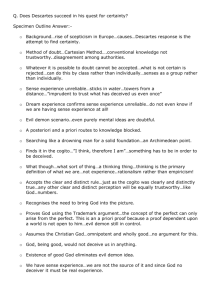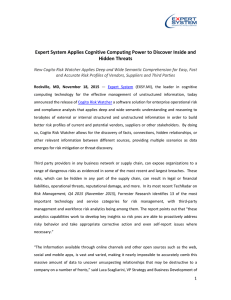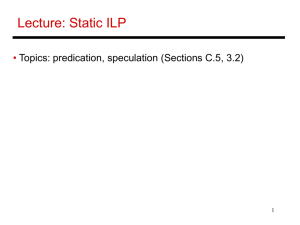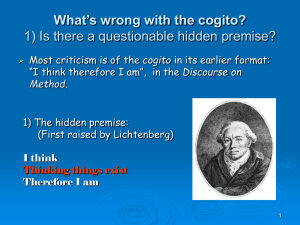Cogito ergo sum (AT 25, 140
advertisement
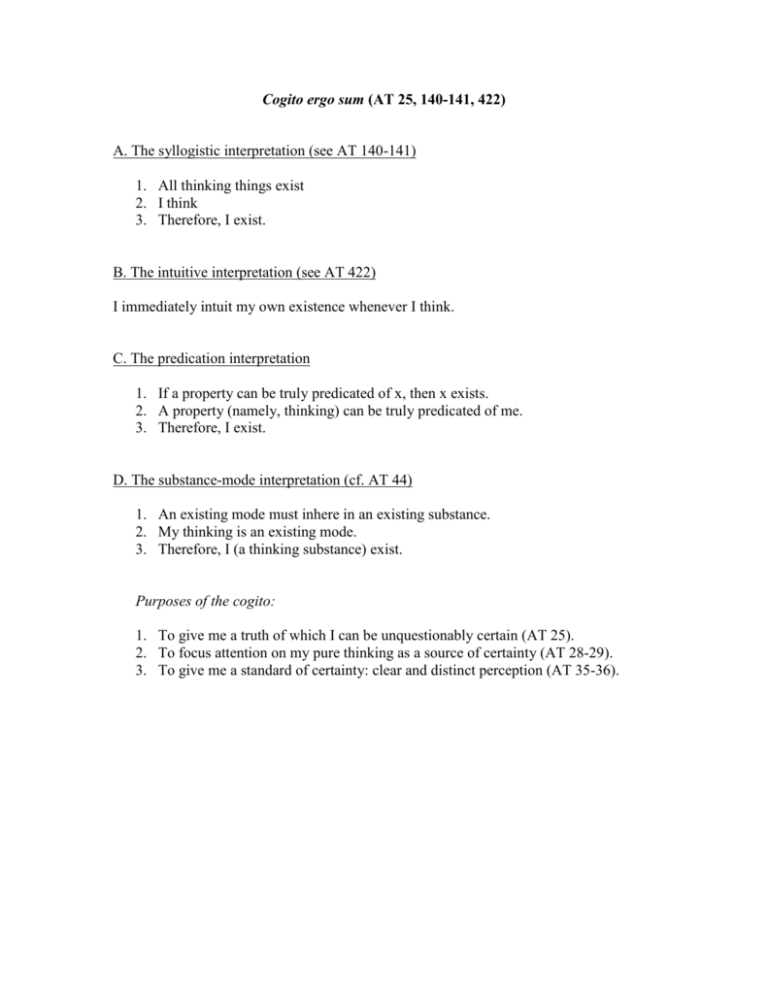
Cogito ergo sum (AT 25, 140-141, 422) A. The syllogistic interpretation (see AT 140-141) 1. All thinking things exist 2. I think 3. Therefore, I exist. B. The intuitive interpretation (see AT 422) I immediately intuit my own existence whenever I think. C. The predication interpretation 1. If a property can be truly predicated of x, then x exists. 2. A property (namely, thinking) can be truly predicated of me. 3. Therefore, I exist. D. The substance-mode interpretation (cf. AT 44) 1. An existing mode must inhere in an existing substance. 2. My thinking is an existing mode. 3. Therefore, I (a thinking substance) exist. Purposes of the cogito: 1. To give me a truth of which I can be unquestionably certain (AT 25). 2. To focus attention on my pure thinking as a source of certainty (AT 28-29). 3. To give me a standard of certainty: clear and distinct perception (AT 35-36).


